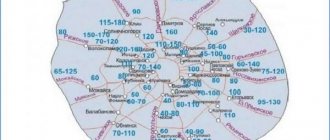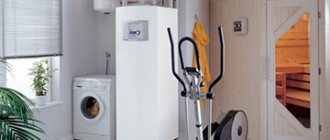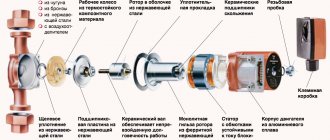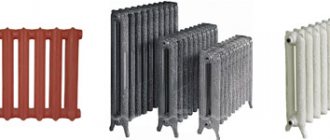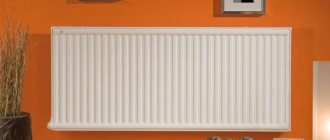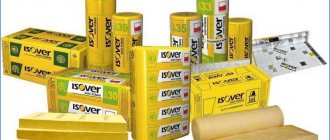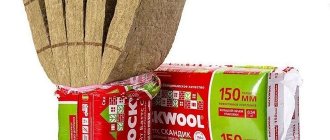Specifications of HDPE pipes
SDR coefficient for HDPE pipes
SDR is a standard dimensional ratio that determines the size of the wall and the circumference of the pipes. This information is needed to determine the water pressure that a pipe of a given size can withstand. With a low coefficient, it is necessary to use a lower pressure head compared to a pipe with thicker walls
When buying products, pay attention to the data that is indicated in the documents for the goods

PE pipe weight
The weight of a PE pipe also depends on the degree of density, because the thicker and wider the PE product, the naturally and higher its mass.
| Nominal outer diameter, mm | Estimated weight of 1 m pipe, kg | |||
| SDR 21 | SDR 13.6 | SDR 9 | SDR 6 | |
| S 10 | S 6.3 | S 4 | S 2.5 | |
| 10 | 0,052 | |||
| 12 | 0,065 | |||
| 16 | 0,092 | 0,116 | ||
| 20 | 0,134 | 0,182 | ||
| 20 | 0,134 | 0,182 | ||
| 25 | 0,151 | 0,201 | 0,280 | |
| 32 | 0,197 | 0,233 | 0,329 | 0,459 |
| 40 | 0,249 | 0,358 | 0,511 | 0,713 |
| 50 | 0,376 | 0,552 | 0,798 | 1,10 |
| 63 | 0,582 | 0,885 | 1,27 | 1,75 |
| 75 | 0,831 | 1,25 | 1,79 | 2,48 |
| 90 | 1,19 | 1,80 | 2,59 | 3,58 |
| 110 | 1,78 | 2,66 | 3,84 | 5,34 |
| 125 | 2,29 | 3,42 | 4,96 | 6,90 |
| 140 | 2,89 | 4,29 | 6,24 | |
| 160 | 3,77 | 5,61 | 8,13 |
| Nominal outer diameter, mm | Estimated weight of 1 m pipe, kg | ||||||||||
| SDR 41 | SDR 33 | SDR 26 | SDR 21 | SDR 17.6 | SDR 17 | SDR 13.6 | SDR 11 | SDR 9 | SDR 7.4 | SDR 6 | |
| S 20 | S 16 | S 12.5 | S 10 | S 8.3 | S 8 | S 6.3 | S 5 | S 4 | S 3.2 | S 2.5 | |
| 10 | 0,051 | ||||||||||
| 12 | 0,064 | ||||||||||
| 16 | 0,090 | 0,102 | 0,115 | ||||||||
| 20 | 0,116 | 0,132 | 0,162 | 0,180 | |||||||
| 25 | 0,148 | 0,169 | 0,198 | 0,24 | 0,277 | ||||||
| 32 | 0,193 | 0,229 | 0,277 | 0,325 | 0,385 | 0,453 | |||||
| 40 | 0,244 | 0,281 | 0,292 | 0,353 | 0,427 | 0,507 | 0,600 | 0,701 | |||
| 50 | 0,308 | 0,369 | 0,436 | 0,449 | 0,545 | 0,663 | 0,786 | 0,935 | 1,47 | ||
| 63 | 0,392 | 0,488 | 0,573 | 0,682 | 0,715 | 0,869 | 1,05 | 1,25 | 1,47 | 1,73 | |
| 75 | 0,469 | 0,543 | 0,668 | 0,821 | 0,97 | 1,01 | 1,23 | 1,46 | 1,76 | 2,09 | 2,45 |
| 90 | 0,630 | 0,782 | 0,969 | 1,18 | 1,40 | 1,45 | 1,76 | 2,12 | 2,54 | 3,00 | 3,52 |
| 110 | 0,930 | 1,16 | 1,42 | 1,77 | 2,07 | 2,16 | 2,61 | 3,14 | 3,78 | 4,49 | 5,25 |
| 125 | 1,25 | 1,50 | 1,83 | 2,26 | 2,66 | 2,75 | 3,37 | 4,08 | 4,87 | 5,78 | 6,77 |
| 140 | 1,53 | 1,87 | 2,31 | 2,83 | 3,35 | 3,46 | 4,22 | 5,08 | 6,12 | 7,27 | 8,49 |
| 160 | 1,98 | 2,41 | 3,03 | 3,71 | 4,35 | 4,51 | 5,50 | 6,67 | 7,97 | 9,46 | 11,1 |
| 180 | 2,47 | 3,78 | 4,66 | 5,47 | 5,71 | 6,78 | 6,98 | 8,43 | 10,1 | 12,0 | 14,0 |
| 200 | 3,3 | 3,82 | 4,68 | 5,77 | 6,78 | 7,04 | 8,56 | 10,4 | 12,5 | 14,8 | 17,3 |
| 225 | 3,84 | 4,76 | 5,88 | 7,29 | 8,55 | 8,94 | 10,9 | 13,2 | 15,8 | 18,7 | 21,9 |
| 250 | 4,81 | 5,90 | 7,29 | 8,91 | 10,6 | 11,0 | 13,4 | 16,2 | 19,4 | 23,1 | 27,0 |
| 280 | 5,96 | 7,38 | 9,09 | 11,3 | 13,2 | 13,8 | 16,8 | 20,3 | 24,4 | 28,9 | 33,9 |
| 315 | 7,49 | 9,35 | 11,6 | 14,2 | 16,7 | 17,4 | 21,3 | 25,7 | 30,8 | 36,6 | 42,8 |
| 355 | 9,53 | 11,8 | 14,6 | 18,0 | 21,2 | 22,2 | 27,0 | 32,6 | 39,2 | 46,4 | 54,4 |
| 400 | 12,1 | 15,1 | 18,6 | 22,9 | 26,9 | 28,0 | 34,2 | 41,4 | 49,7 | 59,0 | 69,0 |
| 450 | 15,2 | 19,0 | 23,5 | 29,0 | 34,0 | 35,5 | 43,3 | 52,4 | 62,9 | 74,6 | |
| 500 | 19,0 | 23,4 | 29,0 | 35,8 | 42,0 | 43,9 | 53,5 | 64,7 | 77,5 | 92,1 | |
| 560 | 23,6 | 29,4 | 36,3 | 44,8 | 52,6 | 55,0 | 67,1 | 81,0 | 97,3 | ||
| 630 | 29,9 | 37,1 | 46,0 | 56,6 | 66,6 | 69,6 | 84,8 | 103 | 123 | ||
| 710 | 38,1 | 47,3 | 58,5 | 72,1 | 84,7 | 88,4 | 108 | 131 | |||
| 800 | 48,3 | 59,9 | 74,1 | 91,4 | 108 | 112 | 137 | ||||
| 900 | 60,9 | 75,9 | 93,8 | 116 | 136 | 142 | 173 | ||||
| 1000 | 75,4 | 93,5 | 116 | 143 | 168 | 175 | 214 | ||||
| 1200 | 108 | 134 | 167 | 206 | 242 | 252 | |||||
| 1400 | 148 | 183 | 227 | 280 | |||||||
| 1600 | 193 | 239 | 296 |
What pressure can HDPE pipes withstand?
According to GOST, four brands of the most common sizes of polyethylene pipes are distinguished:
The last figure denotes the degree of density pnd of the products, on which it depends exactly what pressure this or that PE pipe can withstand.
Gas pipe characteristics
GOST for polyethylene products intended for gas sets their required technical parameters. Some of the indicators are common to both material grades (80 and 100). So, the established density should be more than 930 kg / m3, the range of MFR - ± 20%, the mass fraction of soot (carbon black) - 2.0-2.5%, volatile substances - not more than 350 mg / kg.
Indicators that are different for different grades of polyethylene are given in the table (symbolic designation: BRT - rapid crack propagation).
Table 13
| Indicator | Value for polyethylene grade, * 10 | unit of measurement | |
| 100 | 80 | ||
| MFR at 190º / 5 kgf | 0,01-0,05 | 0,03-0,12 | g / 10 minutes |
| Resistance to MRI at 80 degrees for devices with a nominal diameter of 160 or 110 mm and SDR 11 | 50 (at an initial voltage of 4600 kPa) | 50 (at an initial voltage of 4 thousand kPa) | not less, h |
Pipes for gas from different brands differ in the calculated safety factor, which is given in the table.
Table 14
| Maximum working pressure, kPa | Safety factor value | ||||||
| 300 | 400 | 600 | 800 | 1000 | 1200 | ||
| For PE 80 | SDR 26 | 2,1 | — | — | — | — | — |
| SDR 21 | 2,7 | 2,0 | — | — | — | — | |
| SDR 17.6 | 3,2 | 2,4 | — | — | — | — | |
| SDR 17 | 3,3 | 2,5 | — | — | — | — | |
| SDR 13.6 | 4,2 | 3,2 | 2,1 | — | — | — | |
| SDR 11 | 5,3 | 4,0 | 2,7 | 2,0 | — | — | |
| SDR 9 | 6,7 | 5,0 | 3,3 | 2,5 | 2,0 | — | |
| For PE 100 | SDR 26 | 2,7 | 2,0 | — | — | — | — |
| SDR 21 | 3,3 | 2,5 | — | — | — | — | |
| SDR 17.6 | 4,0 | 3,0 | 2,0 | — | — | — | |
| SDR 17 | 4,2 | 3,1 | 2,1 | — | — | — | |
| SDR 13.6 | 5,3 | 4,0 | 2,6 | — | — | — | |
| SDR 11 | 6,7 | 5,0 | 3,3 | 2,5 | 2,0 | — | |
| SDR 9 | 8,3 | 6,2 | 4,2 | 3,1 | 2,5 | 2,1 | |


Gas pipes are selected according to strength parameters, the choice depends on the pressure in the future pipeline
Relationship with other size characteristics
Products that are made of solid polymer materials can be made in a variety of sizes - from the smallest to the largest. As for their size, it can vary in the range from 10 to 1600 mm
... Their sizes can change at the same time.
Length of the product
Tubular products, which have a diameter of up to 160 mm, are usually supplied by manufacturers in spools or coils. Their length can vary from 100 to 500 meters. However, sometimes they are simply cut into specific sections. Products with a large wall thickness, starting from a diameter of 160 mm, are produced in the form of segments of a certain length. It usually ranges from 3 to 12 m.
For small and large products, the wall thickness may vary:
- for products with an outer diameter of 10 mm, the wall thickness is not more than 2 mm;
- this thickness is not applicable for products with a diameter of 90 mm. The smallest is 2.2 mm;
- with increasing diameter, the wall thickness also increases.
Diameter
I would like to draw your attention to the fact that the most important indicator is the ratio of the product diameter to the thickness. Focusing on it, you can determine the strength of a particular pipeline
This characteristic of the marking is recorded by the SDR index.
In the case of HDPE products, the diameter will be as follows:
- if the product has the same diameters, then the presence of a lower SDR in the polyethylene pipe indicates a greater wall thickness;
- for pipe products of the same thickness, the smaller value of this indicator will be for pipes with the largest diameter. For example, for pipe products with a thickness of 2 mm and a diameter of 10 mm, the working pressure will reach 25 atmospheres. That is, they will be more durable than tubular products with a similar wall thickness and 50 mm diameter. For such structures, the working pressure will reach a maximum of 6 atmospheres.
Formulas for calculating the weight of HDPE and LDPE pipes
How much does a PND pipe weigh? It is easy to answer this question by looking at the formulas for calculating the weight of HDPE and LDPE pipes below. To calculate the weight of the pipe, you must ask the manufacturer for some technical characteristics:
- W - pipe wall thickness
- p - density of HDPE or LDPE material
Step-by-step method for calculating pipe weight:
- Let's calculate the circumference of the HDPE or LDPE pipe: L = π * D
- Let's calculate the area of the outer surface: S = L * l
- We calculate the amount of material spent on the production of the pipe: V = S * W
- Calculate the weight of the pipe P = p * V
P.S. Additional explanation
- Density of HDPE pipe = 940-960 kg / m3
- Density of LDPE pipe = 910-930 kg / m3
- L (m) - circumference
- π
-3,14 - D
(m.) - Pipe diameter - S
(m2) - Pipe surface area - l
(m.)
- pipe length - V
(m3) - the volume of "material spent on the pipe" ... - W
(mm)
- pipe wall thickness - p
(kg / m3) - material density - P
(kg.) - material weight
An example of calculation on a HDPE pipe d32: wall thickness 3mm.
- L = 3.14 * 0.032 m. = 0.10048 m.
- S = 0.10048m. * 1m. = 0.10048m 2
- V = 0.10048 m2 * 0.003m. = 0.00030144
- P = 0.00030144 * 950kg. = 0.286kg. weight of one meter
A source
HDPE pipes are often used in the installation of heating and water supply systems.
When choosing, they pay great attention to the linear dimensions of the products. The strength and permeability of the pipeline largely depends on these indicators.
It is important not only to choose the right pipes for the installation of the communication system, but also to carry out the installation with high quality. There are various ways to connect these pipes
Choosing a suitable option, you can facilitate the task of the pipeline device and ensure the reliability of its operation.
Basic properties
All polyethylene pipes are created from a thermoplastic polymerization product of a lower hydrocarbon - ethylene, which gives products from it similar characteristics:
- The density of the pipe material is 0.94-0.96 g / cm3,
- The operating temperature ranges from -60 to +90 0C, the optimal mode is from 0 to 40 0C,
- Permissible operating pressure of the content - up to 16 atm,
- The diameter of polyethylene pipes can be from 20 to 1600 mm,
- The wall thickness is made from 2 to 60 mm.
ATTENTION! The figures shown are correct for most grades of polyethylene, but there are exceptions. There are such types of polyethylene materials, products from which are able to withstand much higher loads - mechanical, chemical and temperature.
Benefits
Polyethylene pipes have a very long service life - more than 60 years under standard conditions, which is explained by the following capabilities of this material:
- Elasticity, thanks to which the pipe does not deteriorate even when its contents freeze. In this case, it can only slightly deform - stretch in diameter.
- Resistance to common chemical reagents - various acids, alcohols and alkalis, and for some species even to fats and benzene products. Polyethylene does not withstand contact only with liquid fluorine and chlorine, but these substances in their pure form are extremely rare, so such contact is unlikely.
- Resistance to biodegradation by rot and fungus, as well as destruction by insects and rodents.
- With a natural decomposition period of over 100 years.
- Absolute absence of toxic secretions, which allows them to be used in direct contact with food and lay without additional protection.
- The ability to be an excellent insulator for liquids and gases, which allows you not to let anything unnecessary either inward or outward.
- The smoothness of the inner walls.This factor determines the small percentage of their clogging and the appearance of growths.
- Light weight of products. Polyethylene is even lighter than water, due to which the device of communication systems with the participation of polyethylene pipes does not require strengthening the supports, especially strong fasteners and the use of great physical force.
- Ease of installation work. To connect individual pipe sections, a slight heating or fastening with the help of sockets and couplings is sufficient.
INTERESTING! Polymerized ethylene can be an excellent sound insulator. The use of polyethylene pipes instead of their metal counterparts helps to significantly reduce the level of noise coming from communications.
disadvantages


With all the versatility of PE pipes, they have disadvantages associated with the structural features of the material:
- Products do not withstand high temperatures, they are mainly intended for the transport of cold liquids and gases.
- Pure polyethylene becomes brittle after prolonged exposure to sunlight. To protect against ultraviolet radiation, the pipes are processed according to one of the following methods:
- covered with paint (preferably acrylic),
- obstruct with protective materials,
- even at the manufacturing stage, special protective substances are added to polyethylene.
Which pipes to choose
Most often, steel pipes for cold water supply are installed in houses. The disadvantages of such a pipeline are obvious:
- unpleasant taste, color and odor of water due to corrosion of the material;
- rapid destruction of pipes at joints.
Slightly better in terms of the quality of water supplied to the house are zinc coated pipes
... But galvanizing also has an unpleasant property to interact with water and saturate it with zinc compounds. In addition, at the joints of the pipes, the zinc coating breaks down very quickly, and the pipes begin to rust again.
Stainless steel pipes are almost perfect:
- do not rust, do not change the color and taste of water;
- do not pollute water;
- will last long enough.
The only reason they are not used as widely as steel cold water pipes or galvanized pipes is because of their cost. But if you want to have clean water in your home, then you have to spend money.
Cast iron pipes
- a unique and most popular material for trunk pipelines. The service life of such pipes is almost 100 years. If you want to bring water into the house and almost forever forget about the plumbing, stop at this material.
The advantages of cast iron include the fact that it does not interact with water, does not rust and does not affect the taste of water. An important advantage of cast iron pipes is their ability to withstand heavy loads: at factories they are tested at pressures of over 50 atmospheres.
It is possible to use pipes made of cast iron both for domestic drinking water supply and for installing sewerage systems.
Another option is plastic pipes. Quite a popular and budget option, and the ease of installation and long service life made them the favorite material of builders. It is believed that plastic does not interact with water.
Polyethylene pipes, which in modern construction often replace the usual metal pipes, belong to the latest generations of plastic products. They quickly became popular and today the range of their use is quite wide; these are heating and water supply systems of various types. Moreover, experts argue that they are in fact the best alternative to tubular products made of any other materials, of course, if the conditions acceptable for their operation are met. Often polyethylene pipes are abbreviated as HDPE (low pressure polyethylene) or LDPE (high pressure polyethylene), PE.
Content:
- Scope of use of polyethylene pipes
- The qualities that distinguish polyethylene pipes
- Types of polyethylene pipes
- How to distinguish polyethylene pipes by marking
- LDPE
- HDPE
- PEX pipes - heating system made of polyethylene material video
- Installation of polyethylene pipes and its features video video
Scope of use of polyethylene pipes


- Polyethylene pipes are used for water supply, i.e. from them, main pipelines and systems for distributing water in a house or on a site are being built, above-ground, or built underground.
- Due to their high performance characteristics, polyethylene products can be used in the construction of gas pipelines.
- From HDPE pipes, reliable sewage systems are obtained that are used to drain ground or groundwater, domestic wastewater.
- Polyethylene pipes are used in the construction of waterproofing on heating mains.
- They are indispensable in farms where plants are grown on irrigated lands, and with the help of pipes, a constant supply of carbon dioxide to the plants is organized.
The qualities that distinguish polyethylene pipes
One of the important advantages is the ability to serve as plumbing for half a century without changing its quality characteristics. The heating system, during the installation of which polyethylene pipes are used, is guaranteed to serve for about a quarter of a century.
The attractive points for consumers are environmental friendliness and cleanliness of the material.
Pipes can be used in residential buildings, when heated, they are not able to emit substances harmful to people, plaque or rust does not appear inside the pipes, therefore the resulting water is much cleaner than that supplied through metal pipes. Hygienists confirm that fewer pathogens are found in the water obtained from polyethylene pipes.


The pipes have a smooth, attractive surface; it makes no sense to paint it during operation - it looks aesthetically pleasing for many years.
Polyethylene products are not characterized by high thermal conductivity, i.e. condensation on cold water pipes will not collect even in hot weather.
The polyethylene pipe has a low price, it is particularly light and easy to install - if you wish, you can do it yourself.
It is possible to install cold and hot water supply systems from PE pipes.
They also do not respond to exposure to chemicals.
Polyethylene pipes are flexible and elastic, besides, they are very durable and not prone to deformation during physical impact.
Types of polyethylene pipes
Polyethylene pipes may have some differences in quality characteristics and appearance, depending on their purpose.


Pipes for gas pipelines differ in color, along the entire length of the pipe surface has stripes, the same as pipes intended for supplying drinking water. The quality of gas pipes complies with GOST, their working pressure can be 3 - 12 atmospheres.
Pipes for technical purposes are distinguished by the presence in the material, except for polyethylene, recycled raw materials, there is no GOST standard for them. Due to the low quality of the pipe material, there may be a decrease in the quality of the welds performed when joining them, which can lead to a deterioration in the quality of the entire structure. It is recommended to use technical pipes for the construction of service water supply systems and the laying of communication and electrical cables.


The polyethylene sewer pipe is made from high-quality primary raw materials, its working pressure is 5 - 20 atmospheres. The area of use is the creation of pressure sewerage systems.


Polyethylene pipes for water supply are easy to distinguish by their appearance - longitudinal blue stripes are applied to the surface of the pipe. The parameters of such pipes correspond to GOST, they are intended for supplying drinking or industrial water. The working pressure of the water pipes is from 5 to 15 atmospheres.
How to distinguish polyethylene pipes by marking


LDPE
If there are LDPE symbols in the marking of a polyethylene pipe, it means that it is made of high-pressure polyethylene, a plastic material, chemically inactive, having a low temperature of brittleness. Such pipes are lightweight, their transportation and installation, or dismantling, do not cause any special problems. They are resistant to aggressive media, easily withstand compressive, tensile, and deformation loads.
Installation is very simple, its quality allows internal sewerage systems to work efficiently for decades. The working pressure in such pipes can be up to 25 atmospheres. If the substance contained in the pipe freezes, the pipe will not rupture. The recommended operating temperature is up to 40C, but in an emergency the pipe can withstand a temperature of about 80C.


Such pipes are distinguished by chemical inertness, the technology of their production practically excludes the possibility of adding any foreign substances to the polyethylene mass, this allows the pipes to be used in the construction of water pipelines. LDPE products can differ in wall thickness and diameter, as well as in design, pipes can be:
- double-walled,
- corrugated,
- smooth single-layer,
- three-layer, reinforced with synthetic threads.
HDPE


The letters HDPE designate low-pressure pipes, they are produced by polymerizing ethylene at a given temperature (150C) and pressure (20 atmospheres). The resulting product has unique properties, it can withstand a pressure of about 3-5 MPa. It is distinguished by its low weight, but it has a strictly defined temperature range at which it can be operated from 0C to + 40C. Higher temperatures cause the material to lose its ring stiffness, lower temperatures cause glazing.
An attractive point is the low rate of thermal expansion, when exposed to the maximum permissible temperatures, of the order of + 70C, the pipe dimensions will increase by only 3%.
Experts say that the rational use of such pipes is:
- laying cold water pipelines with drinking or industrial water, inside structures or outside, at a depth exceeding the depth of soil freezing
- for the construction of systems for the supply of gaseous substances inert to polyethylene, as well as liquid, the temperature of which is below + 40C
- as boxes for electrical cables.
The ability to operate pipes under certain conditions is influenced by the type of polymer, which determines the tolerance of internal pressure. It also forms the characteristics of HDPE pipes in terms of wall resistance.
Pressure pipes with the abbreviation PE are intended for water supply systems. The starting material for the manufacture of such pipes is a high-quality PE80 or PE100 polymer.


The corrugated polyethylene pipe is made of polyethylene raw materials with the PE63 or PE80 marking, which is resistant to the effects of active chemical reagents. It is used in the construction of sewerage systems. Its main feature is the presence of two layers: the upper one - wavy and the inner one - extremely smooth. Corrugated material serves to impart special strength to the product, smooth - allows you to eliminate any obstacles to the passage of liquid and waste, such pipes are extremely rarely clogged.
PEX pipes - heating system made of polyethylene material


Unique polyethylene products PEX are distinguished by their special strength and ability to operate at high temperatures; they are made by cross-linking polyethylene, which consists in adding molecular bonds in the structure of the material itself.
PEX pipes are characterized by:
- high level of material density,
- resistance to high pressure and temperature, their operation is possible when using a carrier with a temperature of about + 90C,
- when heated, such a pipe can be given any shape, after cooling the material it will remain unchanged, to return the pipe to its previous configuration, it will need to be reheated,
- the service life, during which all declared pipe qualities will be guaranteed, is about 50 years,
- the small weight of the pipes simplifies the process of transportation and installation, does not create unnecessary pressure on the structure of the structure,
- installation is carried out using press fittings or threaded connections, which eliminates the need for any additional equipment.
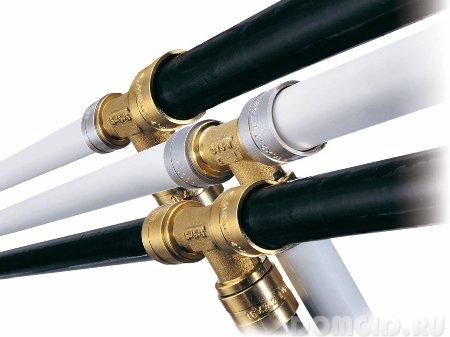

On the positive side, there are no corrosive processes in the material, small linear expansions when exposed to maximum permissible temperatures allow the installation of heating systems inside the walls.
Features of the installation of polyethylene pipes


Installation consists in joining fragments of polyethylene products by welding, using all kinds of fittings for polyethylene pipes.


Their installation is carried out in those places of the system where it is required to branch, turn, change the diameter.


Welding work is carried out using a special soldering iron, consists in melting the inner part of the fitting and the surface of the pipe and quickly connecting them with subsequent cooling.
When using electric welding, the essence of the work performed remains the same, the difference lies in the presence of a device inside the fitting for reflowing the part.
If the connection option with a compression fitting is used, then the soldering device is not required - the work consists in installing a special ring that will hold the fragments to be connected in a certain position relative to each other and prevent the possibility of destruction of the connection.
Author: Sergey and Svetlana Khudentsov
0
Features of the installation of metal pipes
As mentioned earlier, when buying pipes for water supply, you need to pay attention not only to the cost and technical parameters, but also to the complexity of installation. As for pipelines made of metal, there can be two ways of mounting here
- Demountable installation
Collapsible way
the installation of the pipeline involves the connection of pipes by means of special threaded fittings. At the same time, the pipe is screwed into the fitting, and the joint itself is clamped with a lock nut. In other words, there are no fittings with unions, as is the case with plastic pipes.
For installation, you only need an ordinary wrench, but this simplicity also has a downside - if the diameter of the pipes exceeds 6.3 cm, then collapsible installation will not be possible, since the locknuts, as well as fittings, of such a diameter do not exist.
- Non-dismountable installation
As you probably already guessed, non-separable method
consists in welding or soldering joints. It is characteristic that in this case the diameter of the pipeline will not play any role.
Such a versatility of the method requires the use of special tools - a welding machine, a gas cutter, etc. This is where the main disadvantage of non-separable installation "surfaced" - not all welders know how to weld pipes.
Advantages of HDPE Water Pipes
HDPE pipes have a number of undoubted advantages compared to cast iron, steel, concrete, etc.that make them the most preferable when arranging plumbing systems:
- Long service life of 40-50 years or more.
- Resistant to corrosive processes, since polyethylene is chemically inactive.
- Light weight, and, accordingly, ease of transportation and installation (in more detail: "What is the weight of the HDPE pipe - characteristics of the material, rules of use").
- The ability to produce pipes in coils of several hundred meters, which significantly reduces costs and installation time.
- Ease of butt welding.
- No need for isolation.
- Good flexibility and elasticity.
- Resistance to variable soil loads.
- Quite high seismic resistance.
- Resistance to internal loads when water freezes.
- Excellent environmental performance.
- Lack of susceptibility to microbiological processes.
- Wide range of working temperatures of HDPE pipes (from -20 ° С to + 40 ° С).
- Low cost.
- Ease of dismantling, repairing, replacing pipes.
- Simple disposal.
Basic performance characteristics of HDPE pipes
Pipes are delivered to the counters of specialized HDPE stores in coils or coils, in which a pipe with a diameter of 16 to 110 mm and a length of up to 1000 m is laid, as well as in the form of straight segments having a length of 12 m and a diameter of 110-1200 mm. The manufacturer's marking, in addition to the blue stripes, contains the following data:
- the name of the manufacturer, his contact phone numbers, the date of manufacture and the batch number;
- the grade of polyethylene used (PE63, PE80, PE100, PE100 +);
- purpose;
- the thickness and diameter of the walls;
- SDR;
- GOST or TU.
- When choosing HDPE pipes for any specific needs, the following characteristics must be considered:
- the brand of polyethylene used during the creation of the pipe;
- pipe diameter;
- SDR or the ratio between wall thickness and pipe diameter, reflecting the degree of resistance of a material to internal pressure.
In addition to the above characteristics, for polyethylene pipes there is such a parameter as nominal or working pressure. This value reflects the numerical value of the pressure created by the flow of water on the inner walls of the pipeline at a temperature of 200 ° C. Depending on the specific value of this value, HDPE pipes are divided into the following categories:
- pressure pipes;
- medium-pressure pipes;
- pipes working under vacuum.
It should be borne in mind that of the existing varieties of HDPE pipes, only for water-pressure pipelines there is GOST 18599-2001, which describes all the necessary technical parameters and scope. HDPE water-pressure pipes can be used in the following areas:
- when creating communications for domestic water supply;
- for water supply to industrial reclamation plants;
- to create sewerage systems;
- for gas supply communications.
Unfortunately, with sufficiently high performance characteristics, HDPE pipes, nevertheless, are not devoid of certain disadvantages. In particular, pipelines created on the basis of polyethylene water pipes have a very low compressive elasticity, and they also lose their basic properties during prolonged contact with ultraviolet radiation.
Is it possible to use a HDPE pipe for hot water, optimal pipe brands
In this case, a heat-resistant HDPE pipe for hot water is installed, capable of withstanding the effects of a liquid heated to 95 degrees. It is made from heat-resistant polyethylene that does not deform even at a temperature of 110 degrees C.
Such characteristics make it possible to use a hot water pipe not only for domestic needs, but also for laying an autonomous heating system. When choosing a diameter, one should take into account the functional purpose of the pipeline and its location.Usually, heat-resistant products of small and medium diameter are used for arranging the internal section of hot water supply. When laying an outdoor section, a pipe roll with a large cross section is taken.
Non-metallic pipes
Should you replace old metal pipes with more modern non-metal pipes? This question is of interest to many, let's try to figure it out. The main advantage of a non-metallic plumbing is its resistance to rust formation. Moreover, the inner surface is flat and smooth, which will prevent the appearance of build-up characteristic of metal on it.
Plastic pipes can withstand high temperatures (but not more than 95 ° C) and pressures of the order of ten atmospheres. Plastic plumbing will last more than half a century (only copper pipes have such an operational durability).
Reinforced plastic pipes
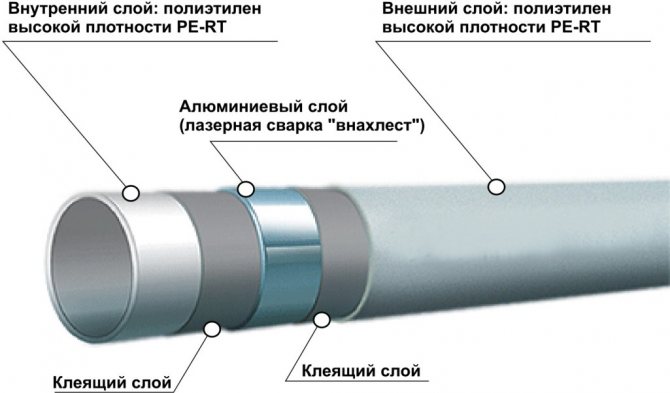

The construction of metal-plastic pipes is multilayer. Outside and inside they have plastic, and in the middle - a layer of aluminum. The advantage is high strength combined with low weight. For example, 20 m of such a pipe weighs no more than 3-4 kg.
Pipes made of metal-plastic are resilient, they can be given any shape. They also conduct heat well. When installing metal-plastic pipes, welding is not required, they are connected together with a wrench and special fittings.
Among the shortcomings, I would like to note the fact that with a sharp temperature jump in water passing through the pipeline, aluminum will shrink faster than plastic. Plus high blood pressure. It turns out that the “Achilles heel” of pipes is precisely the joints.
Note! When purchasing metal-plastic pipes, be aware that blue products should only be used for cold water supply (the water temperature should not exceed 30 °). White pipes are used for hot water supply.
Polypropylene pipes
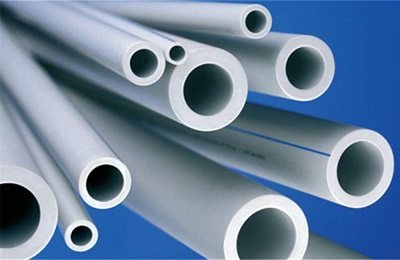

Polypropylene pipes do not have the disadvantages that metal-plastic pipes have, although their technical characteristics are almost the same. The advantage is that the pipes are connected to each other by thermal welding, due to which high strength of the joints is achieved. At the same time, polypropylene is significantly stiffer, which is why it will not work to change the direction of the water supply system by ordinary bending - this is provided by fittings.
Polypropylene pipes are characterized by durability and low cost. They can serve for more than 50 years (if we are talking about hot water supply, then this figure is halved). Moreover, the characteristics of polypropylene remain unchanged even when the water freezes.
The main disadvantage of such pipes is considered to be a high linear expansion rate, that is, at high temperatures, the pipeline lengthens and sags somewhat. They are also negatively affected by ultraviolet radiation, and temperatures above 75 ° C can completely cause a water pipe to rupture.
Polyethylene pipes
Polyethylene pipes can withstand pressure up to 16 atmospheres and temperatures from -40 ° to + 40 °. As we can see, their heat resistance is rather low, which, together with a high linear expansion index, can be considered a negative quality.
For this reason, polyethylene is not often used in water supply, its "relative" is much more popular - cross-linked polyethylene
... This material appeared not so long ago, but has already managed to acquire thousands of supporters. Indeed, the installation of XLPE pipes is very simple, because the fittings used for this do not have rubber seals - for density, the pipe is crimped with a special fitting.
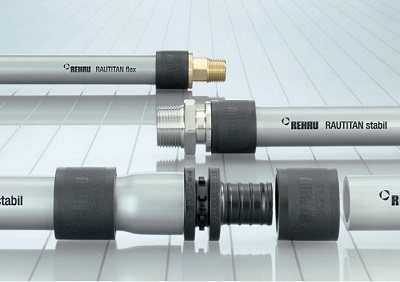

So, the advantages of XLPE are as follows:
- it perfectly tolerates subzero temperatures;
- cross-linked polyethylene is inert to various substances in the circulating water;
- PE pipe connections are very durable;
- the fittings used here do not impair the flow of water.
PVC pipes
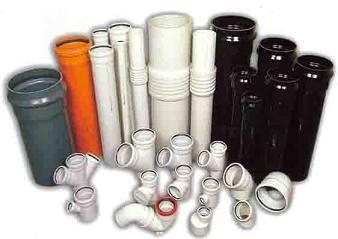

PVC (polyvinyl chloride) surpasses all previous versions of plastic pipes both in strength and in resistance to chemicals. Indeed, such pipes are able to withstand a pressure of about 46 atmospheres. Moreover, the material does not burn, it can be used to supply both hot water (tolerates a temperature of 90 °) and cold.
When installing PVC pipes, you do not need a welding machine or other specific tools, so it is quite possible to carry out all the work on arranging the water supply with your own hands. Pipes are connected only by means of couplings and corners, which makes the process of installing a water supply system more economical.
SDR polymer pipes
SDR is another important indicator of polymer products. This is a non-linear characteristic that determines the ratio of the outer diameter of the nozzle to the thickness of the plastic walls. Naturally, the SDR of gas pipes can be much larger than that of water supply conductors.


Depending on the needs, this indicator can have a ratio from 41 to 6. For example, a pipe with a diameter of 1000 mm and a minimum allowable wall thickness of 25 will have a ratio of 40. For high-density polyethylene, the ratio is maintained within the range of 15–20. According to SDR, experts calculate the maximum pressure that is permissible in the water supply system at a temperature of 20 degrees (for cold water) and 40 degrees (for hot).
Why is this parameter matching so important? A high SDR indicates good passability, but the thinness of the walls. Whereas a low SDR is a sign of low permeability, but high strength and density of elbows
Here S is the series coefficient. It is a standard indicator, which is determined by the table of typical sizes. The parametric series R10 is used for the calculation.
During the installation of HDPE water pipes of various diameters, there may be some differences
- For pipes with a diameter of 20-50 mm, it is necessary to partially disassemble the fitting, then prepare the parts to be connected, that is, clean them from contamination, chamfer from the outside, make the necessary marking of the depth of immersion of the pipe into the fitting cavity, insert the pipe into the fitting with the required force and then tighten the nut to the end of the threaded connection.
- For pipes with a diameter of 63-110 mm, it is necessary to properly prepare the pipe and the compression fitting, for which disassemble it into separate components, such as a split retaining ring, a thrust cup, an O-ring. Then perform preliminary assembly without using the split ring, and after its successful completion, make the final assembly, during which the split ring must be put on the pipe and moved to the coupling, tighten the nut with a wrench.
During the implementation of the second, one-piece method, it is necessary to strictly adhere to all the requirements related to the installation of HDPE pipes, and also take into account that the technology of electrofusion welding and butt welding have rather serious differences between themselves. The most technologically advanced method is butt welding of HDPE pipes.
To implement this method, you will need not only the appropriate skills of the installer, but also the presence of a special welding machine. This method is most often used when installing HDPE pressure pipes of the PE100 brand with a large diameter
The most technologically advanced method is butt welding of HDPE pipes. To implement this method, you will need not only the appropriate skills of the installer, but also the presence of a special welding machine. This method is most often used when installing pressure head HDPE pipes of the PE100 brand with a large diameter.
When butt welding, the ends of the pipes to be connected are thoroughly cleaned, then degreased, after which the ends are chamfered at an angle of 45º, heated with a soldering iron to a state of ductility and joined.Further, leaving the pipes to be connected in their original state, they are waiting for their complete cooling. It should be noted that this method cannot be used for joining pipes of different diameters and pipelines made on the basis of different materials.
The most practical is the method based on the use of welded couplings or fittings that have a special spiral inside, which heats up when connected to an electric current source. When implementing this method, special skill is not required. All that is needed is to place the ends of the HDPE pipes to be welded into a coupling or fitting, connect the spiral to a power source, and then wait until the parts to be joined are fused.
Polymer pipe diameter
The diameters of polyethylene pipes are also strictly standardized. Unlike gas pipes, water supply systems are manufactured in the range from 10 to 300 mm. In some cases, it is also possible to use a 600 mm pipe, but exclusively as an external gravity sewer system.


The most common are low pressure polyethylene pipes 20 mm, 25 mm, 50 mm, 100 mm and 160 mm. To calculate their inner diameter, which, by the way, is not indicated in the standard marking, you need to subtract the wall thickness from the outer diameter. Fittings are calculated in a similar way.
The resulting difference will be the inner diameter. Naturally, having all this data, you can also easily calculate the SDR for the nozzles. For diameter 20, the minimum ratio between diameter and wall should be 2.8.
Features of HDPE pipes
Technological requirements for products
HDPE water pipes are manufactured in strict accordance with low-pressure polyethylene brands PE 80 and PE 100. According to regulatory documents, polyethylene pipes must meet the following basic requirements:
- the surface of the products, both internal and external, must be perfectly smooth;
- the formation of bubbles, cracks, cavities or foreign inclusions on the inner, outer and end surfaces is not allowed;
- products must withstand working pressure (maximum) up to 16 or 20 atmospheres.
Products that meet the stated requirements are manufactured with a diameter of 16.0 to 1600.0 mm and are supplied in coils of 100 and 200 meters or in straight lengths of 12.0 m.
HDPE products are painted black and marked with longitudinal blue stripes, which are evenly distributed around the circumference of the pipe (usually at least three).
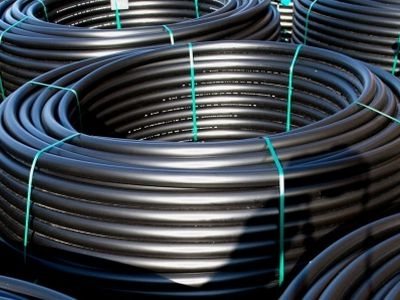

HDPE pipes for water supply
Parameters of PE products
The HDPE pipe for cold water supply, as well as for the transportation of hot water, is characterized by several very important parameters that determine the scope of product use:
- Manufacturing material. Pipes made of PE 80 have good consumer qualities and can withstand a sufficiently high internal pressure of the working medium. Therefore, most often such products are used for the construction of pipelines with a cross section of no more than 90.0 mm. Pipeline products made of PE 100 grade polyethylene make it possible to provide the required throughput with a smaller diameter. Such pipes are mainly used for laying cold water systems.
- Coefficient of resistance of HDPE pipes to working internal pressure (SDR). It is equal to the ratio of the cross-section of the polyethylene pipe to the wall thickness of the product. The lower the coefficient of stability, the stronger the pipes are considered.
- Diameter of low pressure polyethylene products. For laying a private pipeline (in a country or country house), it is enough to use pipes with a diameter of 20 or 25 mm. With a large daily water consumption, you can use pipes 32 mm in diameter.
The main advantages of HDPE products
The demand for these products for laying a water supply system is due to the following advantages:
good resistance to aggressive media such as acid, alkali, salt (except nitric acid); rather long service life (not less than 50 years); neutrality with respect to the transported liquid, therefore, the composition and other properties of water remain unchanged; resistance against various fungal microorganisms; non-susceptibility to corrosion, which is very important in the case of laying pipelines in swampy areas or in soil with high humidity; light weight, which facilitates the process of laying the pipeline.
Another important advantage of polyethylene pipes is their frost resistance up to minus 70 ° C, therefore, when laying the pipeline, there is no need to insulate it.
Design features of polyethylene water pipes
HDPE pipes for water supply are produced in the form of coils with a length of 100 or 200 meters, or in sections of 12 meters. Their surfaces should be smooth-walled both inside and outside, although the presence of slight longitudinal undulations is allowed. There must be no damage, cracks or foreign formations on the surfaces and ends.
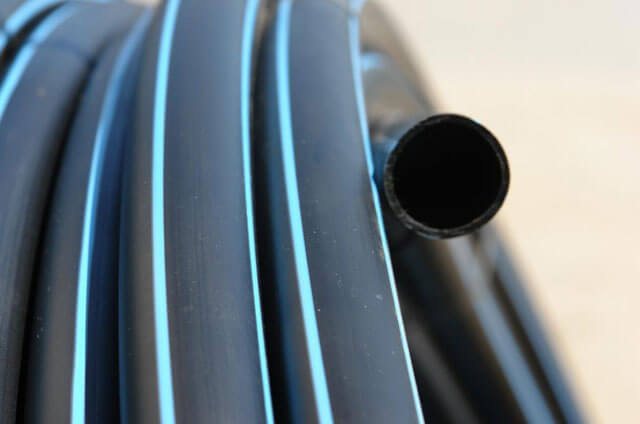

HDPE water pipes are painted black; they may have 3-6 blue longitudinal stripes equidistant from each other. In rare cases, the pipes themselves may be dark blue.
Diameters of HDPE pipes for water supply can be very different, but in most cases they range from 20 to 110 millimeters. Most often, pipes of medium diameters are used, in the range of 63-75 millimeters.
Metal pipes
Metal pipes are a classic. They have been serving for many decades and have not lost their popularity to this day. Among them there are those that are used exclusively for cold water, and there are also for hot water supply. Consider the pros and cons of each type of pipe.
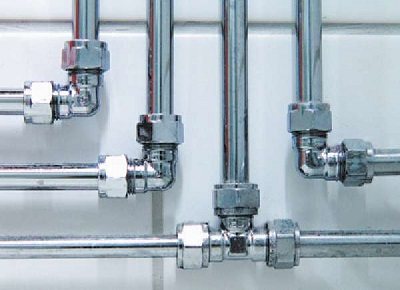

They are ordinary and galvanized. During installation, the pipes are connected by threads, for which tees, adapters, couplings, etc. are used. Steel pipes have gained considerable popularity due to their reliability and durability. They are not afraid of sudden temperature changes and high pressure, and according to the method of manufacture, they are divided into:
- welded;
- seamless.
If we talk about which steel pipes are of the highest quality, then there is only one option - seamless with a galvanized coating. Zinc is known to prevent the formation of corrosion, so there is no need to paint or prime these pipes.
We examined the advantages of steel pipes, now let's see what their disadvantages are.
- Large weight, as a result - difficulties in transportation and installation.
- Corrosion.
- The installation of the pipeline requires welding, which further complicates the process.
- There will be foreign impurities in the water passing through the pipes.
- All seams must be carefully sealed.
- With prolonged operation, the inner diameter of the pipes decreases, since build-ups are formed. As a result, the pressure drops significantly.
Not so long ago, pipe manufacturers were surprised by a unique production technology. The fact is that steel pipes have appeared, covered from the inside with a non-metallic layer, which prevents the formation of build-ups and the formation of corrosion. The outer layer of the products remains metallic for strength.
Stainless steel pipes
There are no technical flaws in stainless steel pipes. They can be used at a wide variety of temperatures, elevated pressures, etc. But such pipes are rarely found due to their only drawback - very high cost.
Copper pipes


Copper pipes also have excellent corrosion resistance, moreover, their inner surface is less rough than other metal counterparts.For this reason, such pipes have a higher flow capacity, due to which the copper pipe can be of a smaller diameter compared to steel.
Copper is distinguished not only by its long service life (copper pipes can last more than fifty years), but also by its disinfecting characteristics - water, in contact with it, is cleared of harmful microorganisms. Also, the copper pipeline is quite easy and quick to install. In general, copper is the optimal material for plumbing, because it does not change the taste of water, but, on the contrary, improves it.
The main disadvantage of copper is considered to be its high cost.
Marking
Polyethylene components are used for installation:
- cold and hot water supply networks,
- gas pipelines,
- sewerage and drainage networks,
- irrigation and humidification systems in crop production,
- protective pipelines for power supply and communication cables.
Note! Polyethylene pipes are necessarily marked by the manufacturer - they are painted in colors established by production standards and signed with an alphanumeric code.
Color coding solves two problems:
- simplification of the selection of components corresponding to the purpose of the pipeline - pipes with different technical characteristics are needed for different working environments;
- designation of the purpose of the pipeline when placing utilities underground for safety and ease of maintenance and repair.
An alphanumeric code applied to each running meter of a pipe denotes the following pipe characteristics:
- abbreviated name of the manufacturer;
- material of manufacture - polyethylene pipes are marked with PE or PE;
- density coefficient of polyethylene - from 32 to 100;
- appointment;
- pressure instability coefficient (SDR) - from 9 to 26 (the lower, the more resistant the pipe is to water hammer);
- geometric parameters in DxS format, where D is the inner diameter, S is the wall thickness;
- quality standard - number of GOST or European standard;
- information about the batch - date of issue, batch number, control mark.


Note! The complete marking with all the information is not always applied, only information about the material of manufacture, the density coefficient, the purpose of the pipe, its diameter and wall thickness are required. If the pipe does not have these data, it is undesirable to use it for laying the pipeline.
The use of polyethylene pipes
Due to the properties listed above, PE pipes have a wide range of applications. They are used with the device:
- gas pipelines of medium and low pressure,
- cold water supply systems (including drinking),
- pressure and gravity sewerage systems,
- drainage systems,
- industrial pipelines for transportation of chemically aggressive products,
- melioration and irrigation systems,
- irrigation and drip irrigation systems,
- factory technological pipelines,
- pipelines for transporting slurry and other abrasive liquids,
- temporary or bypass pipelines,
- dewatering systems.













